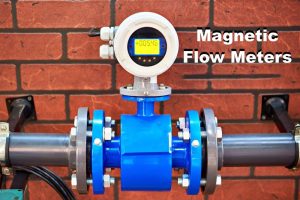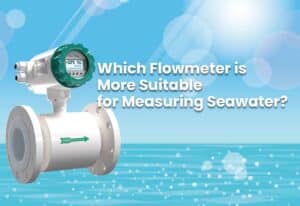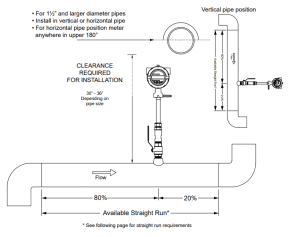In the world of flow measurement, turbine meters have long held a reputation for accuracy, reliability, and cost-effectiveness. Whether you’re working in oil and gas, pharmaceuticals, chemical processing, or water management, turbine meters offer a tried-and-true solution to tracking the flow of liquids and gases. This comprehensive guide will walk you through everything you need to know about turbine meters—from how they work to where they thrive and why they’re still among the most popular flow meter types in the market today.
What Is a Turbine Flow Meter?
A turbine flow meter is a type of volumetric flow meter that measures the flow rate of a fluid by detecting the speed of a turbine rotor inside the meter body. As the fluid flows through the meter, it causes the rotor to spin. The rotational speed of the turbine is directly proportional to the velocity of the fluid, which can be converted into a flow rate.
Turbine meters are widely recognized for their high accuracy, fast response time, and wide operational range, especially in clean, low-viscosity liquids.
How Do Turbine Meters Work?
At the core of the turbine meter is a rotor placed in the path of the fluid flow. Here’s how the process works:
-
Fluid enters the meter and passes through a flow-straightening section that reduces turbulence.
-
The fluid hits the angled blades of the turbine rotor, causing it to spin.
-
The rotational speed of the turbine is measured using a magnetic or optical pickup sensor.
-
The sensor generates a pulse signal, and the frequency of the pulses is proportional to the flow rate.
-
The data is then transmitted to a display or a control system for monitoring.
This mechanical-to-electrical conversion makes turbine meters both simple in design and effective in practice.
Key Components of a Turbine Flow Meter
To understand the precision of a turbine meter, it’s important to know its major components:
-
Turbine Rotor: Spins due to fluid flow.
-
Flow Straightener: Minimizes turbulence to improve measurement accuracy.
-
Pickup Coil/Sensor: Detects the rotor speed and sends electrical pulses.
-
Bearings: Support smooth rotation of the rotor.
-
Meter Body: Usually made of stainless steel or other corrosion-resistant material.
-
Output Signal Converter: Converts pulse signals into readable flow data.
Each part is meticulously engineered to ensure the optimal performance of the device in real-world industrial conditions.
Types of Turbine Meters
Turbine flow meters come in several variations depending on the application:
1. Axial Turbine Flow Meters
These are the most common type. The rotor is aligned with the flow direction, and they are used in both liquid and gas applications.
2. Radial Turbine Flow Meters
Here, the rotor is perpendicular to the flow path. These are more specialized and used in low-flow or miniature systems.
3. Insertion Turbine Flow Meters
Rather than having a full-bore meter body, the turbine is inserted into the pipe. These are ideal for large pipelines where full-bore meters would be cost-prohibitive.
4. Sanitary Turbine Flow Meters
Built with hygienic materials and smooth finishes for use in food, beverage, and pharmaceutical industries.
Applications of Turbine Flow Meters
Turbine meters are incredibly versatile and can be found in a wide range of sectors:
● Oil and Gas
Used for custody transfer, refined fuel measurement, and pipeline flow monitoring.
● Chemical Processing
Accurate dosing and mixing of chemicals in batch processes.
● Water and Wastewater
For clean water distribution, turbine meters provide reliable flow data.
● Food and Beverage
Hygienic turbine meters ensure compliance with FDA and 3-A sanitary standards.
● Pharmaceuticals
Sterile flow measurement in the production of vaccines and liquid medicines.
● HVAC Systems
Used to monitor cooling water, glycol mixtures, and chiller flows in commercial buildings.
Advantages of Turbine Flow Meters
Turbine meters remain a popular choice for many reasons:
✅ High Accuracy
Typically offers ±0.5% to ±1.0% accuracy, and even better with calibration.
✅ Wide Flow Range
Handles a broad spectrum of flow rates, making it ideal for varied applications.
✅ Fast Response Time
Delivers real-time readings with minimal lag.
✅ Easy to Install
With minimal straight pipe requirements compared to other flow meter types.
✅ Cost-Effective
Provides excellent price-to-performance ratio.
✅ Suitable for Clean Liquids
Performs exceptionally well in non-viscous, clean fluids.
Limitations of Turbine Meters
Despite their advantages, turbine meters are not perfect for every scenario:
-
Not Ideal for Dirty or Viscous Fluids: Particulates can damage the rotor and skew readings.
-
Requires Maintenance: Bearings and moving parts wear over time.
-
Sensitive to Flow Profile: Accuracy can be affected by turbulence or improper installation.
-
Unidirectional Measurement: Most models measure flow in only one direction.
Understanding these limitations helps in choosing the right meter for the job.
Turbine Flow Meter vs. Other Flow Meter Technologies
Here’s how turbine meters stack up against common alternatives:
| Feature | Turbine Meter | Electromagnetic Meter | Ultrasonic Meter | Coriolis Meter |
|---|---|---|---|---|
| Accuracy | ±0.5% | ±0.25% | ±1.0% | ±0.1% |
| Suitable Fluids | Clean Liquids | Conductive Fluids | Clean or Dirty Fluids | Any Fluid |
| Maintenance | Moderate | Low | Low | High |
| Cost | Moderate | High | High | Very High |
| Installation Complexity | Low | Medium | Medium | High |
As you can see, turbine meters are competitive in terms of accuracy and offer a lower cost of ownership compared to more complex flow meters.
Best Practices for Turbine Meter Installation
To get the best performance, follow these essential tips:
-
Straight Pipe Runs: Allow 10 pipe diameters upstream and 5 downstream for accurate readings.
-
Avoid Vibration: Mount the meter in a stable, vibration-free location.
-
Proper Orientation: Install horizontally for liquids and vertically (upward flow) for gases.
-
Use Flow Conditioners: To reduce turbulence in systems with elbows or pumps nearby.
-
Filter the Fluid: Protect the rotor with inline filters to prevent clogging.
Correct installation ensures your turbine meter operates at peak accuracy and longevity.
Maintenance and Calibration
While turbine meters are mechanically durable, regular maintenance is key to longevity:
-
Clean the Rotor and Bearings: Especially in systems with potential buildup.
-
Check Signal Output: Ensure consistent pulse generation.
-
Recalibrate Periodically: At least once a year or as recommended by the manufacturer.
Following a maintenance schedule keeps your system efficient and reliable.
Choosing the Right Turbine Flow Meter
Selecting the correct turbine meter involves several factors:
-
Fluid Type: Liquid, gas, or steam?
-
Operating Pressure and Temperature
-
Pipe Size and Flow Rate
-
Required Accuracy
-
Material Compatibility
-
Industry Standards (e.g., ANSI, ISO, FDA, 3-A)
Working with a reputable manufacturer or distributor can help you match the right product to your needs.
Conclusion
Turbine meters remain one of the most widely used and trusted flow measurement tools across industries. Thanks to their robust design, high accuracy, and cost-efficiency, they are ideal for clean, fast-moving fluids where precise measurements are crucial. While they may not be perfect for every fluid type or application, their benefits make them a solid choice for many real-world uses.
If you’re in search of a reliable, versatile, and accurate flow meter, the turbine meter should be high on your list. By understanding how they work, where they excel, and how to maintain them properly, you can ensure long-term efficiency and measurement accuracy in your operations.
Need help selecting a turbine meter for your system? Contact a trusted supplier or engineerin





